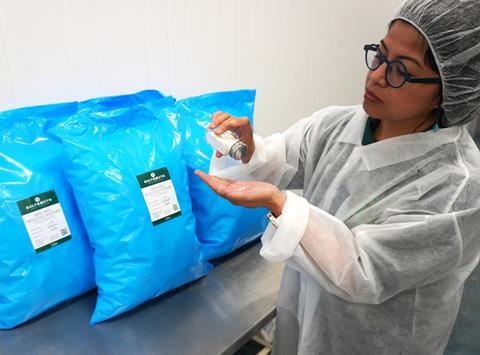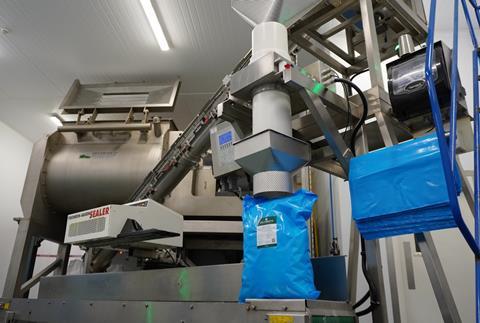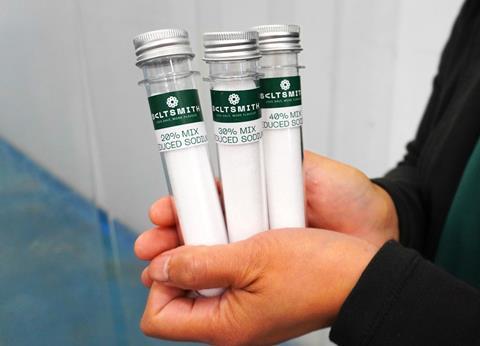In an era where health consciousness drives consumer behaviour, bakeries are under increasing pressure to offer products that not only satisfy the palate but also promote better health. And reducing sodium is one challenge that can be overcome easily and confidently, says Peacock Salt.

A significant way to promote better health in bakery products is by reducing their sodium content. Utilising salt blends, particularly those combining potassium chloride with sodium chloride, offers a promising strategy for reducing sodium while maintaining the quality and flavour that consumers expect. This article aims to guide bakers in incorporating salt blends to meet sodium reduction targets without compromising product excellence.
The necessity for sodium reduction
Excessive sodium intake is a well-documented public health concern, linked to hypertension, cardiovascular disease, and stroke. The average UK sodium consumption is significantly higher than the recommended WHO daily limit of 6 grams. In response, the government has imposed strict regulations, including the 2024 salt reduction targets, to mitigate these health risks. These targets specifically apply to 84 food groups, 13 of which are bakery items.
For bakeries, these regulations represent both a challenge and an opportunity. The challenge lies in reformulating products to reduce sodium without sacrificing taste and texture. The opportunity, however, is to attract health-conscious consumers and enhance the bakery’s reputation by aligning with these public health initiatives.
Reformulation, often seen by bakeries as a challenge, can inspire innovative solutions. By strategically reducing ingredients, bakeries can maintain or even enhance product quality. Mastering a reformulation strategy that balances consumer preferences, operational costs, and product integrity is crucial for continued business success.
Strategies for sodium reduction in bakery products
Bakers can employ several strategies to reduce sodium in their products effectively. These include:
Gradual reduction: Incrementally decreasing the salt content over time allows consumers to adapt to the new reformulated taste profile without a noticeable difference. This ‘stealth’ approach can be particularly effective in maintaining customer satisfaction.
Use of salt blends: By far the most versatile solution, combining sodium chloride with potassium chloride or using naturally occurring low-sodium salts can significantly reduce sodium content while maintaining the desired salty flavour. The freedom to tailor salt blends to specific product requirements makes it a widely adopted sodium reduction strategy.
Flavour enhancers: Herbs, spices and other flavour enhancers (e.g., seaweed and yeast extracts, MSG, etc.) can compensate for reduced salt levels, ensuring that the product remains flavourful and appealing, and can also increase its nutritional potential.
Uneven salt distribution: Using coarse-grained or encapsulated salt can create bursts of saltiness, making it possible to use less salt overall without compromising taste. However, restricted access to salt can potentially impact dough development in breadmaking.

Advantages of salt blends
Salt blends, particularly those that combine sodium chloride with potassium chloride, have proven effective in reducing sodium levels without negatively impacting flavour. Studies show reformulated products using salt blends can be indistinguishable from products using regular salt in taste tests, and in some cases, preferred by consumers.
Understanding a one-size-fits-all approach is not an effective sodium reduction strategy, the flexibility of salt blends allows bakers customisation to meet specific product and process needs. This bespoke approach can address various operational challenges, enabling bakeries to tackle each obstacle as they arise. The ability to combine multiple functional ingredients – for example, baking soda, dough improvers and seasonings – into one blend, a service such as the one offered by Saltsmith, streamlines the production process and reduces the need for additional storage space.
Enhancing quality with salt blends
Reformulating recipes to reduce sodium of a much-loved product undoubtedly carries risk, but it is a risk worth taking given the regulatory and market pressures and to guarantee continued profitable business operation. Budgeting tools, such as Saltsmith’s cost analysis tool help bakers understand the financial implications of switching to salt blends in recipes of popular bakery items – a marginal increase between 0.8%-2.5% in some cases. This helps to ensure the reformulation strategy aligns with business goals and maintains profitability.
Ensuring success in sodium reduction

Successful sodium reduction requires careful planning and implementation. Here are some key guidelines:
Allow adequate time: Gradual reformulation allows consumers to adapt to new flavour profile, reducing the risk of rejection.
Address quality issues early: Collaborate with salt suppliers who offer a range of products and new product development (NPD) support, as offered through Saltsmith. Collaborative partnerships can help identify and solve quality issues posthaste during the development stage, impeding its progress into production stage.
Adopt an holistic approach: Regularly review your product profile to understand all contributing factors to sodium content, which surprisingly might not just be salt. Sometimes, replacing or omitting ingredients other than salt can have a more significant impact in reducing sodium levels.
Call to action
The perceived risks of sodium reduction by bakers — impact on process ease, product quality and consumer trust — are mitigated with a well-devised reformulation strategy supported by industry insights and supplier collaboration. Salt blends provide a viable solution, enabling bakers to meet sodium reduction targets while potentially enhancing product quality. The liberty of creating bespoke blends further improves the likelihood of reformulation success, enabling customised solutions to specific product and business needs and challenges.
By embracing sodium reduction and utilising innovative solutions like salt blends, bakeries not only comply with regulatory requirements but also cater to the growing consumer demand for healthier options. Together with industry partners like Saltsmith, bakers can explore and implement effective salt blend options that align with their products and business goals. Reformulating to reduce sodium is a strategic move towards sustainable and profitable operations, meeting both regulatory expectations and consumer needs.
Embrace the challenge of sodium reduction today and lead the way in offering healthier, delicious bakery products.
To find out more about Peacock Salt’s low sodium solution, Saltsmith, click here or to speak to someone, email info@peacocksalt.co.uk or call +44 (0)1292 292 000.

































